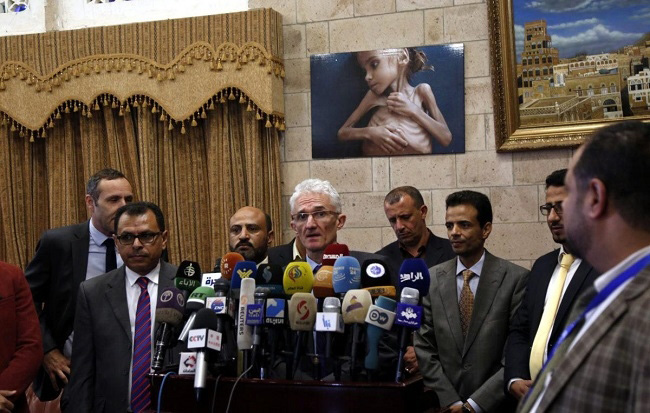


|
|
|
|
"The WFP (World Food Programme) still has not had access to
the Red Sea Mills, which is frankly a tragedy," he told reporters at a
regular briefing. "It's basically a quarter of all of WFP's weekly
in-country wheat stock."
"It can feed 3.7 million (people)," he said. "The
fact is that we have not been able to access it. The fact is that it is at
risk of contamination ... whether it is vermin, rot or anything else. The
use-by date is 2020, but, obviously, that's within a framework where the
silos can be monitored, surveilled, which is not the case here. So it is a
high risk."
On February 7, representatives of Yemen's internationally
recognized government and Ansar Allah, the formal name of Houthi rebel
fighters, reached a tentative agreement on the mutual withdrawal of forces
from the city and port of Hodeidah and the opening of humanitarian channels.
The negotiators then took the "preliminary compromise"
back to their respective leaders. Dujarric said the United Nations are
waiting for responses.
"As far as I am aware both sides left the ship, went back
to their leadership and we are still waiting to hear from them," he
said.
Lt. Gen. Michael Lollesgaard of Denmark, who chaired the
negotiations aboard a ship berthed in Hodeidah port, said he expected to
reconvene the negotiators within this week.
The United Nations and its humanitarian partners are attempting
to reach 12 million people in Yemen with emergency food assistance, the
spokesman said.
|
Source: NDO